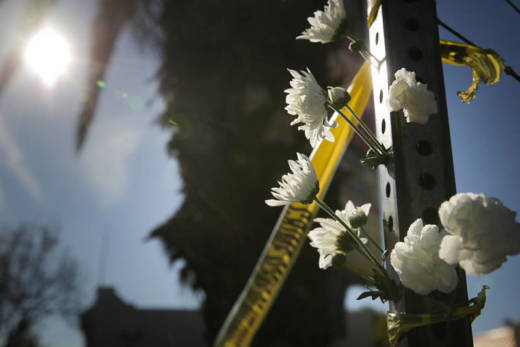A roundup of notable recent coverage of the Dec. 2 warehouse fire in Oakland's Fruitvale District that killed 36 people.
Why the Ghost Ship Was Invisible in Oakland, Until 36 Died (New York Times/Thomas Fuller, Julie Turkewitz, Yamiche Alcindor, Conor Dougherty and Serge F. Kovaleski): The charred, roofless shell of the Ghost Ship, the warehouse where 36 people perished on a chilly Friday evening in early December, is clearly visible from the driveway of Oakland firehouse No. 13. Though the warehouse sits less than 200 yards away, the firehouse’s proximity did nothing to help prevent America’s deadliest structural fire in more than a decade. For years before the Dec. 2 fire, the Ghost Ship may just as well have been invisible to the Oakland Fire Department. Raucous parties. Frequent complaints by neighbors. Calls summoning firefighters to put out fires at nearby properties. None of these triggered an inspection of the warehouse by the crew at the firehouse a short block away. (Read full story.)
Are internet trolls to blame for warehouse code crackdown? (East Bay Times/Aaron Davis): In the wake of the Ghost Ship fire, some individuals banded together to save warehouses and artists’ spaces by fixing them; another group’s end goal was to shutter spaces in an effort to “crush the radical left.” The group has called itself Right Wing Safety Squad but colloquially calls itself the SS, and claims to have contributed to shutting down 16 artists’ live-work spaces across the country. They claim responsibility for the crackdown on Burnt Ramen and Bridge Art Space in Richmond as well as Qilombo and Peralta Studios in Oakland, although they also admit they have no proof of their participation. (Read full story.)
After Ghost Ship Fire, Tupac's Old Lawyer is Helping Artists Fight Eviction (Mother Jones/Meagan Day): In the aftermath of the Ghost Ship warehouse fire in Oakland, California, that claimed 36 lives earlier this month, the inhabitants of live-work artist warehouses all over America have been receiving eviction threats and notices. In Oakland and San Francisco, residents of at least five such spaces are now facing eviction. Warehouses in Baltimore and Denver have been shuttered since the fire, and others are facing increased scrutiny in Nashville, Philadelphia and Dallas, as well as Indianapolis and New Haven, Connecticut. Many worry that this activity is related less to safety concerns than to property owners' desire to expel low-wage artists in favor of wealthier tenants. Bay Area artists, at least, have a high-profile defender—civil rights lawyer John Burris, who has stepped up to act as a liaison between tenants and local government code enforcers. (Read full story.)
Survivors, friends of Ghost Ship victims demand moratorium on evictions (East Bay Express/Nick Miller): A group of survivors and close friends of the Ghost Ship fire victims delivered what they are calling an "Open Letter to Mayor Libby Schaaf" this afternoon. More than 1,000 community members also signed the letter, which demands that that mayor enact an "emergency eviction moratorium," in addition to to implementing housing policy reform. The mayor has said that City Hall is reviewing its fire inspection policies, but that there is no intent to go on a "witch hunt" against Oaklanders living in nonconventional spaces and warehouses. (Read full story.)
